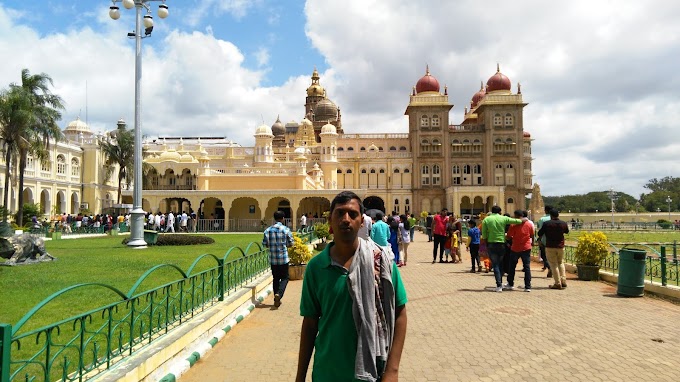HOW THE INDUS VALLEY CIVILIZATION WAS DESTROYED: INDUS VALLEY
CULTURE: JYOTIRMAYA PRASAD BEHERA
Indus valley Civilization is one of the civilization among
the ancient civilization. Actually time has not been defined by any
archeologists and the period is very from person to person. Some archeologists
told the period from 3500 to 1500 BC and /or some archeologists defined from
3300 to 1300. Indus Civilization was covered Afganistan, Pakistan and Western
India. The main source of income or live hood derived from the farming and
trading with the Sumerian. Till yet it is difficult to catch the clue by the
archeologist that how and when this civilization was destroyed and why / who
destroyed. The archeologist have made opinion that there are some following
occurrence for which the civilization might be destroyed.
(i)
Flood
(ii)
Earthquake
(iii)
Attacked by Sumerian
(i)
FLOOD:-
Indus valley Civilization was situated near
side of or bank of Sindu River. All the ancient civilization were situated on
bank of river. The main reason was to established their settler on bank of
river that the fertile areas. The main source of income was farming and for farming needs fertile
areas. On rainy day in Sindu River was come the flood and due to flood, the
fertile soil were found. The archeologist opinioned that there must be big
flood came and destroyed the entire city. The scientists have made opinion that
the main reason of the collapse of Indus Civilization due to flood. The Preliminary studies by
Raikes suggested that a great natural disaster( a series of vast floods) could
have been a major factor. Rising of Sea level can be devastating for coastal
settlement since there is no recovering from it. The scientist has found some
records of floods across the ancient civilization.
Earthquake
The regional tectonic
setting is controlled by the collision of the Indian and Eurasian plates and
the seduction of the Arabian plate beneath the Eurasian plate. Earthquakes have
undoubtedly struck many ancient sites, but finding their footprint in a
riparian environment represents a challenge for archaeoseismology. However,
some insight into seismoarchaeological indicators can be gleaned from examining
the earthquake effects produced by historical infrequent large-magnitude events
that have occurred in the region. Studies of these earthquakes emphasize the
importance of repeated reconstructions, direct faulting, river damming from
seismic uplift, and coastal elevation change as indicators of past earthquakes.
Examples of past earthquake effects are presented for Banbhore in the Indus
Delta, Brahmanabad, and the Harappan sites of Kalibangan and Dholavira. Future
hermeneutic investigations in the region need to incorporate a
seismological/tectonic perspective and not rely solely on serendipity.
ATTACKED BY SUMERIAN
Only in the south, on the Arabian Sea coast, might the Indus
dwellers have faced attack. It’s perhaps no coincidence that this is where the
only fortified settlements have been found. As for a possible attack from
distant Mesopotamia, there would have been little motivation, given the value
of the Indus trade, advantage the fact that Mesopotamian rulers were
preoccupied with internal battles.
For protection from seasonal floods and polluted waters, the
settlements were built on giant platforms and elevated grounds. Upon these
foundations, networks of streets were laid out in neat patterns of straight
lines and right angles. The buildings along the roads were all constructed of
bricks that were uniform in size.
The city lacks ostentatious palaces, temples, or monuments.
There's no obvious central seat of government or evidence of a king or queen.
Modesty, order, and cleanliness were apparently preferred. Pottery and tools of
copper and stone were standardized. Seals and weights suggest a system of
tightly controlled trade.
Whatever the scientists find, there is a possibility that the
results would lead to much recrimination, as is already happening over
interpretations of medieval Indian history. But to fight over the findings
would be pointless. Every single Indian, like the vast majority of the human
population, is a descendant of migrants and almost every Indian carries
multiple lineages. (The possible exception to this are the Onge tribes in the
Andaman and Nicobar islands who escaped the large-scale genetic mixing that occurred
in India between 2,000 BC and the early centuries of the Common Era, as
suggested by recent genetic research). Some of our lineages come from the
original OOA migrants, some from Neolithic migrations from West Asia, some from
Neolithic migrations from East Asia, some from Bronze Age migrations from the
Steppes, and some from migrations that happened even later.
After the collapse of Indus Civilization, emerged “ARYANS”. A race of European or Central Asian “ARYANS”
swept into the subcontinent displacing the original Indus Civilization and it
might be the reason for the collapse. Various elements of
the Indus Civilization are found in later cultures, suggesting the civilization
did not disappear suddenly due to an invasion. Many scholars came to believe in
an Indo-Aryan Migration theory stating that the Harappan culture was
assimilated during a migration of the Aryan people into northwest India.
Alexander the Great spread his empire south and east from
Macedonia until he was stopped at India's Beas River. His last conquest had
been the Indus River Valley, which runs the length of present-day Pakistan. if
Alexander, gazing across the Indus Valley 2400 years ago, realized that a great
civilization had thrived there, three thousand years before him.











